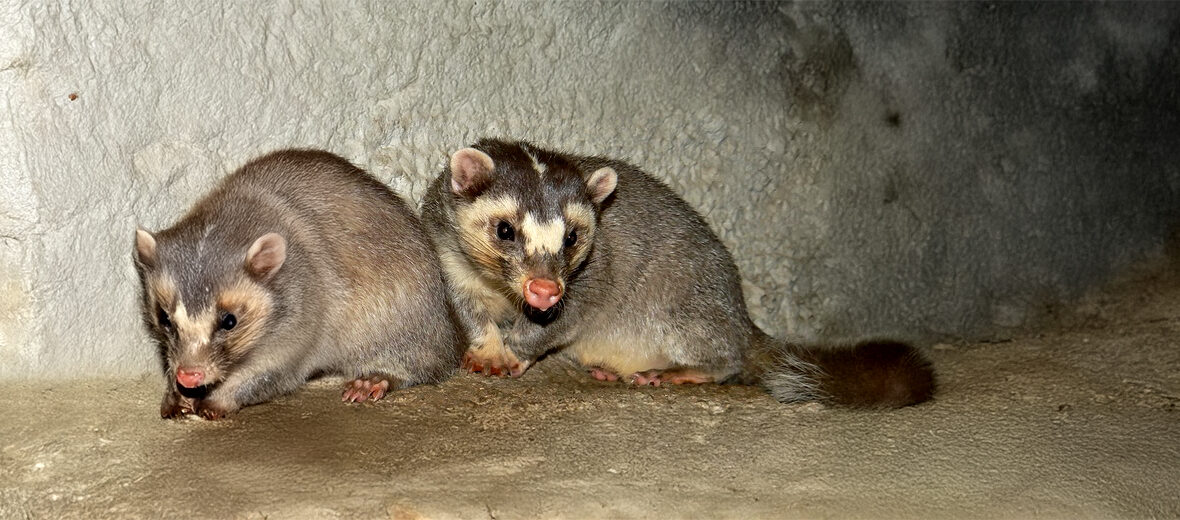
The Chinese ferret-badger, aka small-toothed ferret-badger, hails from southeast Asia. These critters prefer grasslands, open forests, and tropical rainforests. They are threatened by hunting, for their meat; and trapping, for their fur. However, they are abundant across their range and are thus listed as Least Concern by the IUCN. Their population trend is listed as stable, for now.
First the Stats…
Scientific name: Melogale moschata
Weight: Up to 6.6 lbs.
Length: Up to 17 inches, plus up to a 9.1 inch tail
Lifespan: Up to 17 years
Now on to the Facts!
1.) Ferret-badgers are among the most widely camera-trapped small carnivores in Vietnam, including in rather heavily hunted areas where most species are now rare.
2.) Because these critters do not usually prey on livestock, nor cause to damage to property or farm facilities, they are not persecuted.
3.) They tolerate human disturbances quite well, and temporarily dwell in agricultural areas like cotton fields, grass fields, rice paddies, and soybean fields.
4.) These creatures are both crepuscular (active at dawn and dusk) and nocturnal (active at night).
5.) The ferret-badger is a skilled climber.
But wait, there’s more on the Chinese ferret-badger!
6.) Being a mustelid (like skunks, weasels, and more) they have the capability of producing foul-smelling anal secretions when startled or threatened.
7.) While being able to create their own hides, they often take over abandoned burrows made by rodents and other critters.
Did you know…?
Ferret badgers are listed as the most hunted fur-bearing animals in Southern China, however they have relatively high population densities in part due to their nearly-inedible meat and the extremely low prices of their pelts.
8.) Fruit, insects, lizards, frogs, and worms are all on the menu.
9.) After a period of delayed implantation (where the female can hold onto the male’s sperm for an extended period of time before becoming pregnant) females undergo up to an 80 day gestation (pregnancy) that yields up to 3 kits.
10.) These critters are associated with reported outbreaks of human rabies in southeastern China and Taiwan. These were first reported in 1997 and the most recent case in 2008. There have been no reported deaths in these cases though; however, there is currently no rabies vaccine for these animals.
Now a Short Chinese Ferret-Badger Video!
Be sure to share & comment below! Also, check out the Critter Science YouTube channel. Videos added regularly!

Want to suggest a critter for me to write about? Let me know here.
Some source material acquired from: Wikipedia & IUCN
Photo credit: Николай Усик



